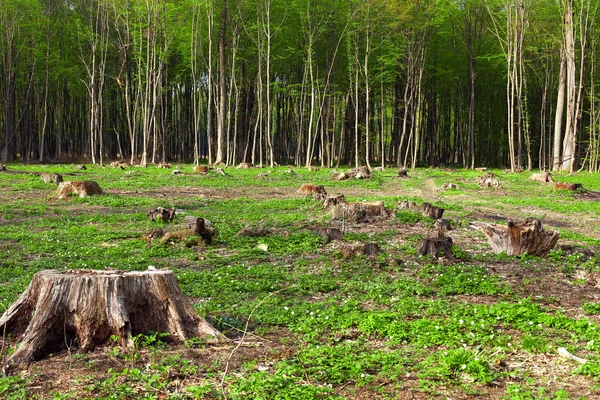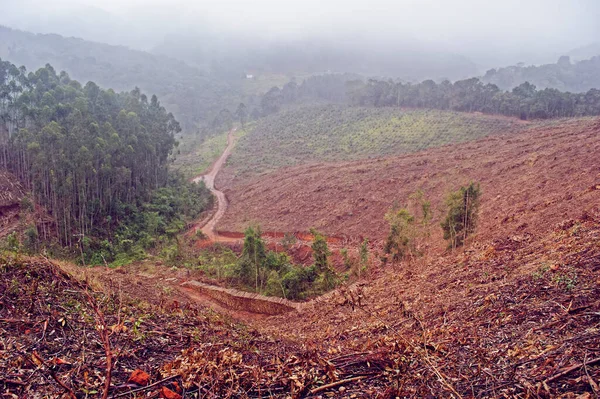
Deforestation is one of the most pressing environmental issues of our time, contributing to biodiversity loss, climate change, and the disruption of ecosystems. As forests are cleared for agriculture, logging, and urban development, the world is losing one of its most valuable natural resources. However, the rise of circular economies, which prioritize recycling and the sustainable use of resources, offers a promising solution to mitigate deforestation. By closing the loop on resource use, circular economies can help reduce the demand for raw materials, preserve forests, and promote environmental sustainability. This article explores the connection between deforestation and recycling and how circular economies can play a crucial role in protecting our planet’s forests.
Understanding Deforestation and Its Impact
1. The Scale of Deforestation
Deforestation occurs at an alarming rate, with an estimated 10 million hectares of forest lost each year. This destruction is driven by various factors, including the expansion of agricultural land, logging for timber and paper products, and the clearing of forests for infrastructure development. The consequences of deforestation are far-reaching, affecting not only the environment but also the livelihoods of millions of people who depend on forests for food, water, and shelter.
Forests are vital for maintaining the Earth’s ecological balance. They act as carbon sinks, absorbing and storing large amounts of carbon dioxide, which helps mitigate climate change. Forests also play a critical role in regulating the water cycle, preventing soil erosion, and supporting a diverse range of plant and animal species. The loss of forests, therefore, has a profound impact on the environment and contributes to global warming, habitat destruction, and the displacement of indigenous communities.
2. The Role of Consumer Demand
One of the primary drivers of deforestation is the demand for raw materials, such as timber, palm oil, and soy. These materials are used in a wide range of products, from paper and packaging to food and biofuels. As consumer demand for these products increases, so does the pressure on forests to supply the necessary raw materials. This demand is often exacerbated by inefficient resource use and the lack of sustainable practices, leading to unnecessary deforestation and environmental degradation.
How Recycling Can Mitigate Deforestation

1. Reducing the Need for Virgin Materials
Recycling plays a crucial role in reducing the demand for virgin materials, which are often sourced from forests. By recycling materials like paper, wood, and plastic, we can decrease the need for new raw materials, thereby reducing the pressure on forests and other natural resources. For example, recycling paper can significantly reduce the demand for timber, helping to conserve forests and protect biodiversity.
Recycling also helps to close the loop on resource use, creating a circular economy where materials are continuously reused and repurposed rather than being discarded. This approach not only conserves resources but also minimizes waste, reduces greenhouse gas emissions, and promotes environmental sustainability.
2. Supporting Sustainable Supply Chains
In a circular economy, recycling is integrated into supply chains, ensuring that materials are used more efficiently and sustainably. This approach encourages companies to design products with recycling in mind, using materials that can be easily recycled and repurposed. By adopting circular economy principles, businesses can reduce their reliance on virgin materials and promote sustainable practices throughout their supply chains.
Circular economies also support the development of new recycling technologies and infrastructure, making it easier to recycle a wider range of materials and reducing the environmental impact of resource extraction. For instance, advancements in recycling technology have made it possible to recycle complex materials, such as electronics and textiles, which were previously difficult to process.
3. Promoting Reforestation and Sustainable Forestry
Recycling not only helps to reduce deforestation but also supports reforestation and sustainable forestry practices. By reducing the demand for raw materials, recycling allows forests to regenerate naturally and supports efforts to reforest degraded areas. Additionally, circular economies can promote the use of sustainably sourced materials, such as certified timber, which is harvested in a way that protects forests and maintains their ecological functions.
Sustainable forestry practices, such as selective logging and agroforestry, can be integrated into circular economies to ensure that forests are managed responsibly and that their resources are used efficiently. These practices help to protect forests from overexploitation, preserve biodiversity, and support the livelihoods of local communities.
Technical Insights: How Circular Economies Foster Sustainability
1. Material Efficiency
One of the core principles of a circular economy is material efficiency, which involves using fewer resources to produce the same amount of goods and services. This can be achieved through recycling, reusing, and repurposing materials, as well as designing products that are easier to recycle. Material efficiency reduces the need for raw materials, decreases waste, and minimizes the environmental impact of production.
In the context of deforestation, material efficiency means that fewer trees need to be cut down to produce paper, timber, and other wood products. By using recycled materials and promoting efficient resource use, circular economies can help to conserve forests and reduce the demand for deforestation-driven products.
2. Lifecycle Assessment
Lifecycle assessment (LCA) is a tool used in circular economies to evaluate the environmental impact of a product throughout its entire lifecycle, from raw material extraction to disposal. LCA helps identify opportunities for reducing resource use, minimizing waste, and improving sustainability at every stage of a product’s lifecycle.
In the case of deforestation, LCA can be used to assess the impact of wood-based products and identify ways to reduce their environmental footprint. By incorporating LCA into product design and manufacturing processes, businesses can make more informed decisions that support forest conservation and sustainability.
Key Takeaways
- Deforestation Impact: Deforestation has severe environmental consequences, including climate change, habitat loss, and the displacement of indigenous communities.
- Recycling Benefits: Recycling reduces the demand for virgin materials, helps conserve forests, and supports sustainable resource use.
- Circular Economies: Circular economies promote material efficiency, reduce waste, and foster sustainable practices that mitigate deforestation.
- Sustainable Forestry: Recycling supports reforestation and sustainable forestry practices, ensuring that forests are managed responsibly.
Call to Action
At Cleancyclers, we are dedicated to advancing recycling initiatives that protect forests and promote sustainability. By supporting our mission, you can help reduce deforestation, conserve natural resources, and create a greener, more sustainable future.
Donate to Cleancyclers today and join us in our efforts to build a circular economy that benefits both people and the planet. Your contribution will support recycling programs, reforestation projects, and sustainable forestry practices that protect our world’s precious forests for generations to come.
Together, we can make a difference and ensure that our natural resources are used wisely and sustainably.


